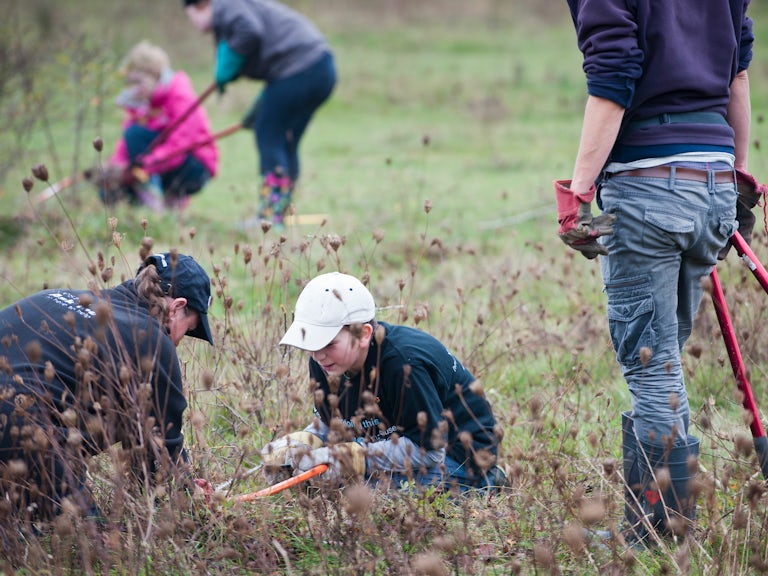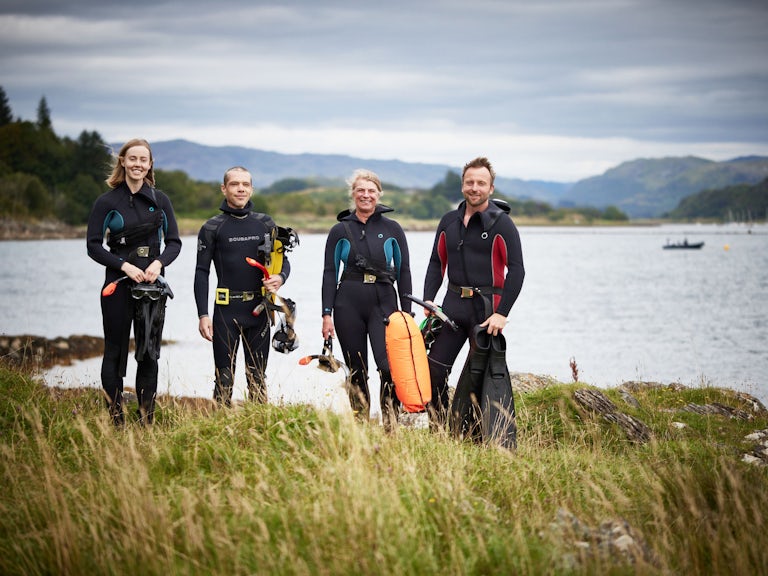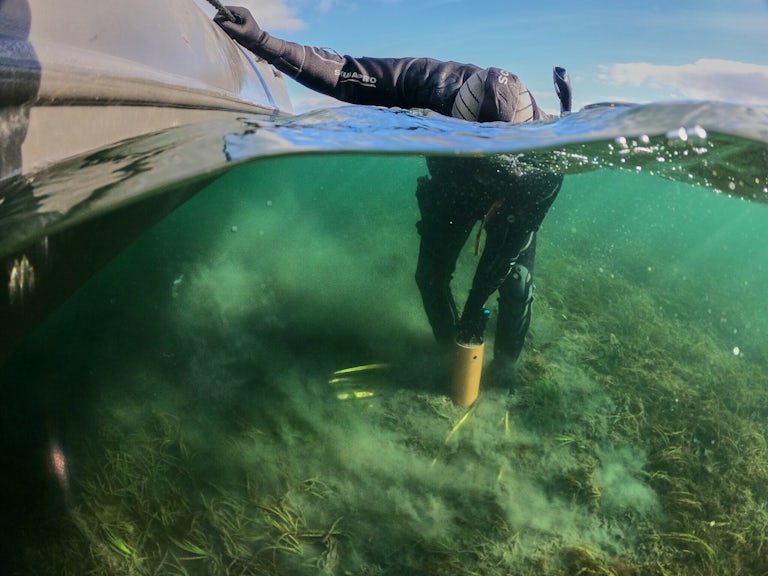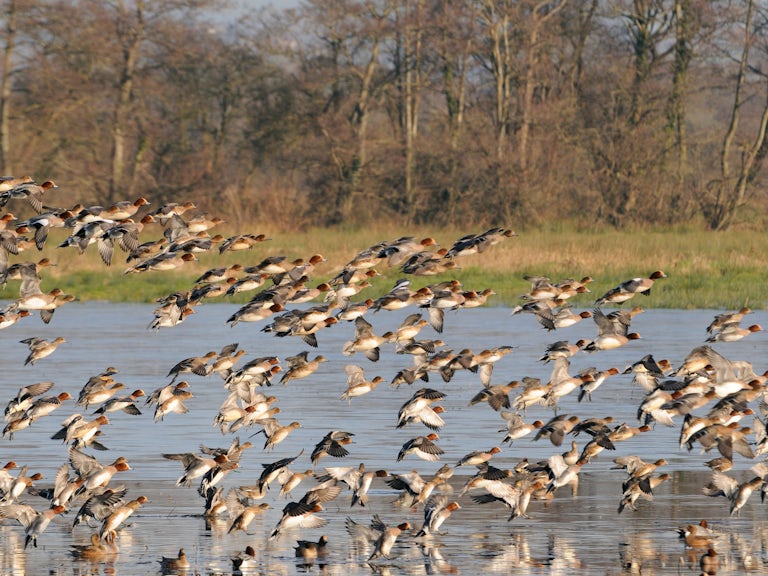Rewilding water
Healthy rivers, lakes and wetlands are critical for life on Earth. Here we explore the urgent need to rewild the water in our landscapes

Water is a powerful aquatic architect and an ecosystem engineer. It has a life of its own. It can be liquid, ice or vapour, and in the earth and air as well as water. It shapes landscapes according to its form and the energy it carries; be that the dew gathering on cobwebs or grass, the freeze and thaw of ice in winter, or the reshaping of a river landscape in flood. Water can transform features over centuries through the slow erosion of rock, or in an instant by dissolving, shattering and travelling.
We are the only planet in our solar system with water on its surface. But only 0.1% of the 3% freshwater on the earth is accessible as surface water. This makes it an incredibly rare resource. Life, by its very nature, flocks to it. Our water landscapes should be tangible, visceral and audible. Instead, they are often tamed, quiet and untouchable. In Britain, we’ve altered our wetlands and waterways so much that we no longer know what wild water looks like.
If we restore water to its natural ways, invariably biodiversity will follow. The rewilding of water to a landscape often causes wildlife to materialise that you never expected. Water and abundance are synchronous. And there are many more benefits. Given the chance, the land will act as a natural sponge for rainfall and floodwaters. Freshwater and coastal wetlands will act as a buffer to major disaster risks including flooding, drought, climate change and sea level rise.
Our relationship with water is a complex one. Most human settlements were, by necessity, based around secure fresh water sources that were key to our survival. River floodplains rich in nutrients were also important for food production, as were bountiful coastal waters. It’s no surprise that these tended to be the places where we built our towns and dwellings.
0.1%
of the 3% freshwater on Earth is accessible as surface water
A resource to exploit
Over time we’ve expanded our settlements into the spaces that water naturally occupies. This includes floodplains where we drained more land for food production. We’ve used water for transport and waste disposal, and extracted it for consumption.
With increasing technological and engineering capacity, the human tendency was to manage and control water. We forgot in the process that this water, and the abundance that it creates, brought us close to it in the first place. And we overlooked the limits to how much water can be controlled.
We’ve tended to regard it as useful and treated it as expendable. There are many landscapes that we now consider to be essentially dry – such as heathland – which in their wet form can present a unique ecological niche soaked in acid pH water. Too many have been drained of this amazing resource. Water springing from unusual geologies, such as chalk or greensand, also adds to bio-uniqueness.
“Water landscapes are essential for human wellbeing, for buffering climate change and for biodiversity”
True wetlands such as bogs and marshes, floodplains and salt marshes have often been seen as an inconvenience to our day-to-day lives – soggy, smelly, and difficult to navigate around at times, and devastating to lives and livelihoods at others.
Wetlands and rivers have been ditched, drained, dammed, diverted and generally messed around with on behalf of humans for quite some time. They are some of our most damaged and controlled natural habitats – with fens, bogs and reedbeds only clinging on in isolated pockets in most parts of the UK.
We’ve broken the natural flow of water from source to sea – and with it, its wildness and its wildlife. It’s estimated we’ve lost at least 90 per cent of our natural wetlands in Britain. This leaching of water from every corner of our landscape has left it poorer.
Wilder water
We now realise how essential water landscapes are for human wellbeing, for buffering climate change and for biodiversity. These landscapes have the potential to be some of our most abundant and easily restorable. With climate change bringing new water challenges, we urgently need a new relationship with water – accepting it into our landscapes again, rewilding it where we can and reintegrating it into our lives.
This includes restoring peatlands and blanket bog, removing unnecessary drains, reconnecting rivers with their flood plains, letting rivers meander again, demolishing dams and other obstructions to fish movement where no longer needed, and ensuring the good health of the landscapes alongside watercourses – for example, helping woodland to thrive on riverbanks and at least 20 metres inland. It also, very importantly, includes re-establishing beavers in the wild.
Water is most of our world. It holds life in its wet embrace. Rewilding our rivers, lakes and wetlands can be a powerful force for the good of people and the planet.
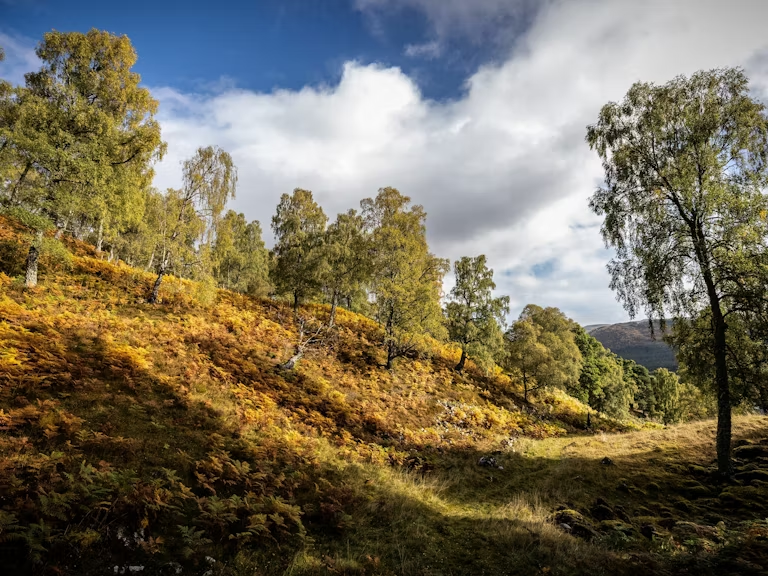
Rewilding 101
Start here to learn all about rewilding, what it looks like and what it can do.
Why rewild
Our vision
We have big ambitions. Find out what we’ve set out to achieve through rewilding.
What we do
Rewild your inbox
Wise up with the latest rewilding news, tips and events in our newsletter.
Sign up now